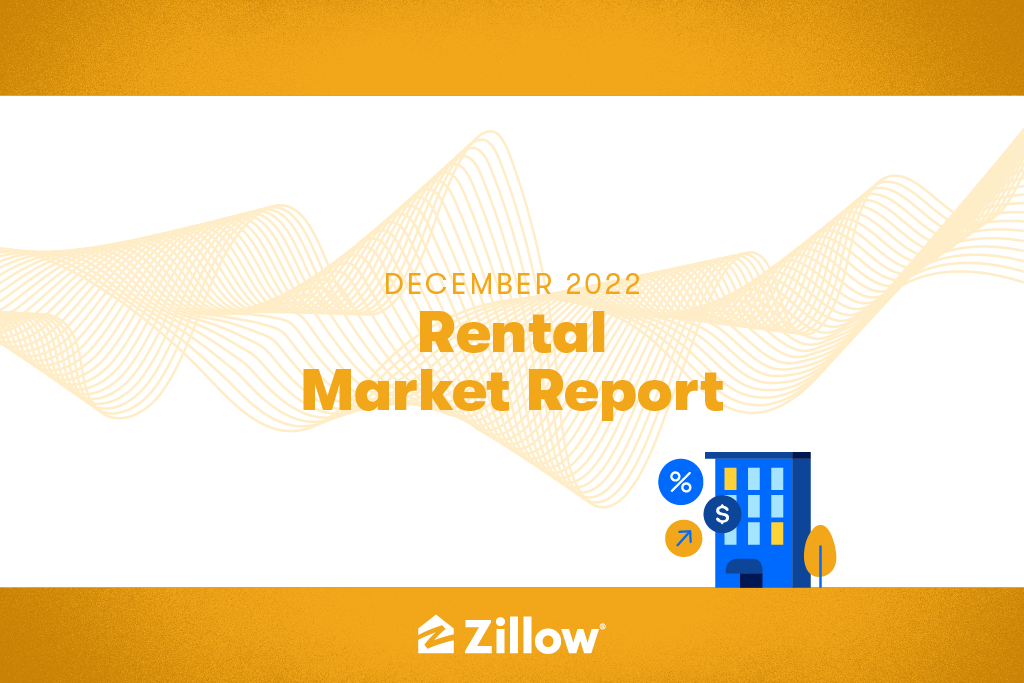Rents slide for third month in a row to close out 2022 (December 2022 Rental Report)
Asking rents fell 0.3% from November to December, another large decline following the largest one-month drop in the seven-year history of the Zillow Observed Rent Index.
Asking rents fell 0.3% from November to December, another large decline following the largest one-month drop in the seven-year history of the Zillow Observed Rent Index. While December is part of the seasonal doldrums for rental market demand, this month’s decline still dwarfs previous Decembers in the ZORI time series, which dates back to 2015. The decline comes on top of a 0.4% drop in November. Typical asking rents at the national level now stand at $1,981, still 7.4% more than this time last year.
What Falling Rents Mean for Housing Inflation
This new batch of data further underscores the current divergence between market asking rents, which are declining rapidly, and the Consumer Price Index for Rent of Primary Residence. CPI for Rent of Primary Residence tends to lag market asking rents by about one year, so as of January, it is still rising rapidly and setting new multi-decade highs for annual growth. The deceleration of ZORI growth starting in March 2022 suggests that CPI-Rent growth will likely start to decelerate sometime in the first half of this year.
Rent growth has been cooling since reaching a peak of 17.1% year-over-year growth in February. Americans’ demand for housing has waned this year after booming in 2021, thanks to higher costs of rent and generally high inflation. More people are doubling up with roommates or family, pushing up the rental vacancy rate and thereby putting some pressure on landlords to keep rent hikes in check. This slower pace of rent growth is likely to show up in official measures of rent inflation in early 2023.
Where rents are falling fastest, and where they’re still rising
The steepest monthly declines in rent were observed this December in Seattle (-1.0%), Las Vegas (-0.9%), Dallas (-0.8%), San Jose (-0.8%) and Washington, D.C. (-0.8%). The additions of Dallas and D.C. to the bottom-five list show that rental market weakness is not confined to the West. Rather, this is a broad-based, mostly national slowdown underway.
Rents rose the most on a monthly basis in Sacramento (2.7%), Providence (0.6%), Cleveland (0.5%), Pittsburgh (0.2%) and Charlotte (0.1%). Aside from Sacramento’s growth (which looks like statistical mean-reversion given how low annual growth there remains, at 4.0%) these markets show relatively steady rental demand in some of the more affordable parts of the American heartland.
In Las Vegas, rents have come full circle
On a year-over-year basis, rents are now down in Las Vegas (-0.9%), and barely up at all in Phoenix (1.7%), New Orleans (2.2%), Baltimore (3.1%) and Austin (3.9%). This group illustrates the two paths to the bottom of the rent growth leaderboards: a reversal of booming pandemic-era rental demand (Vegas, Phoenix and Austin), or a persistent shortfall in housing demand (New Orleans and Baltimore).
Annual rent growth was highest in Miami (11.7%), Louisville (10.4%), Cincinnati (10.2%), Providence (9.7%) and New York (9.6%), reflecting the decelerating tail-ends of booms in red-hot Miami and NYC, as well as the solidity of demand in affordable midsize metro areas.
The most expensive major market is San Jose, where typical monthly rent is $3,216, followed by San Francisco ($3,100), New York ($3,062), San Diego ($2,991), and Los Angeles ($2,917) – the same cities in the same order as last month.
